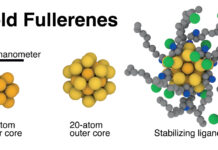
Imagine you’re in aircraft maintenance and a mission is scheduled to fly in the next 24 hours. You need a part that hasn’t been manufactured in more than 30 years. A specially-commissioned replacement is available for $15,000, but it will take a year to arrive.
A technician tells you he can get you the part by the end of the day for less than $500. When you ask how the answer is shocking: He’s going to “print” one.
The previous scenario is a real-world example of what aircraft maintainers for the 513th Air Control Group do every month for the Air Force’s only Reserve associate unit for America’s Airborne Warning and Control System (AWACS) fleet. Assigned to Tinker Air Force Base, Oklahoma, the AWACS maintenance community is a blend of active-duty Airmen with the 552nd Air Control Wing, traditional Reservists, Air Reserve Technicians, and civil service employees — all working together to keep the parts-and-labor intensive AWACS fleet flying.
“With our 3-D printing capability, we can have 30 parts ready in hours with spares distributed into the AWACS supply system,” said Staff Sgt. Christopher Ritter, metals tech section chief for the 513th Maintenance Squadron. “The technology is simple. An Airman can become competent on the printer in 10 days, from software and machine maintenance to getting signed off on the printer in his training records.”
Ritter said the printers represent an added empowerment for the 21st century Air Force maintainer. If a vital part that’s not under contract is unavailable, the maintainer can print their own. After a thorough inspection, a zero balance issue, meaning parts are unavailable, can be eliminated.
Zero balance for parts is a problem across the service as aircraft age and contracts lapse. The advent of 3-D printing has empowered maintainers to fill voids in the supply system.
The printer AWACS maintainers use has a printing area of 16 inches x 14 inches by 16 inches and allows for spools of colored plastic to be subject to high heat, melting them through a stylus that follows a plotted pattern. A manufactured piece cools rapidly at room temperature, then becomes as hard as most metals.
Ritter demonstrated how a printed mold fixture was durable enough to bend sheet metal in a hydraulic press to create necessary brackets for the airframe. The printed plastic mold reduces an eight-hour long project to less than 90 minutes.
“The printed plastic is heavier than phenolic parts,” explained Ritter, referring to a type of lightweight plastic resin used in many aircraft worldwide today.
That can be a disadvantage when every pound of weight added to an aircraft means greater fuel consumption, so smaller pieces are more convenient to manufacture.
Another advantage of the 3-D printing capability is, while it only prints plastic parts, the plastics can be up to four layers thick and be high-performance thermoplastics, static-dissipating polymers, or heat-resistance compounds.
In December 2015, the plastic met the requirements for fire and smoke safety and was approved for use. Ritter said it’s for this reason that some 3-D printable parts can also be used as welding fixtures to hold metal parts while welding, whereas phenolics cannot.
“We can hold a blowtorch to a printable plastic part and, while it may turn black, it won’t burn or emit any harmful vapors,” he said. “Phenolics produce a toxic vapor when subject to open high heat.”
Tech. Sgt. Joshua Rea, Ritter’s counterpart with the 552nd Maintenance Squadron Fabrication Flight, said the printer can only be used for parts that are not under contract.
“All active-duty and Reserve Airmen in our shop use this 3-D printer regularly,” said Rea. “We give our Airmen training projects during the week to maintain their familiarity with the machine. It might be a bathroom door knob handle that’s no longer made or a seat assembly component. The [ACG] Reservists expand our fabrication capabilities and help us in designing new parts. We’re glad to work alongside them and they are valued members of Team AWACS.”
Ritter said he is optimistic for the future of tomorrow’s maintainer when it comes to 3-D printing capabilities. Having been an AWACS maintainer for only two years, his past maintenance experience includes F-16, F-15 and A-10 weapon systems – all aircraft that were built before he was born.
Read more: AWACS maintainers at leading edge of 3-D printing
Image courtesy of af.mil
Related Links:
Air Force awards nScrypt’s research company Phase 2 contract for 3D printed conformal antenna arrays











